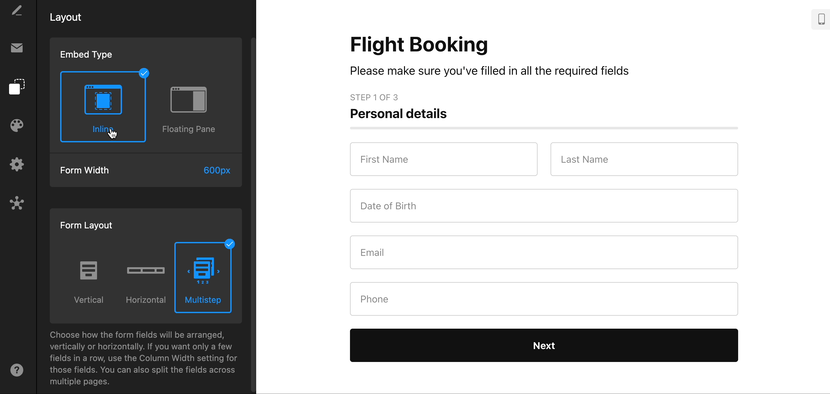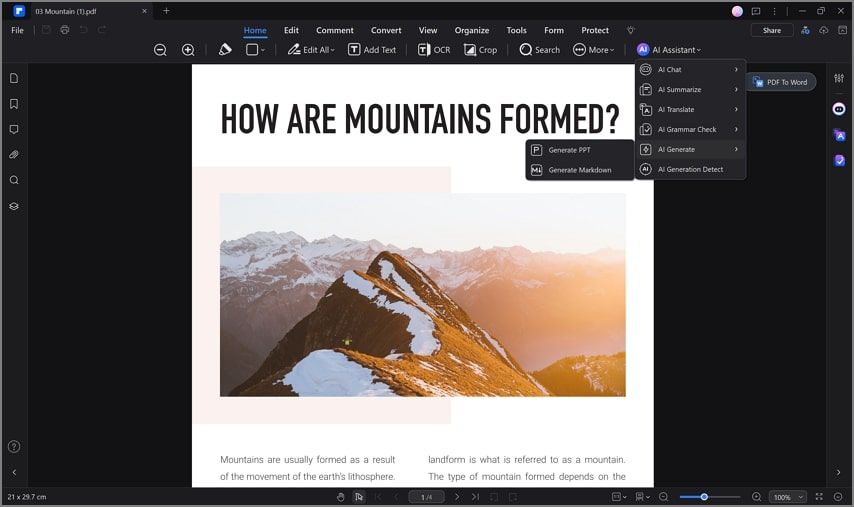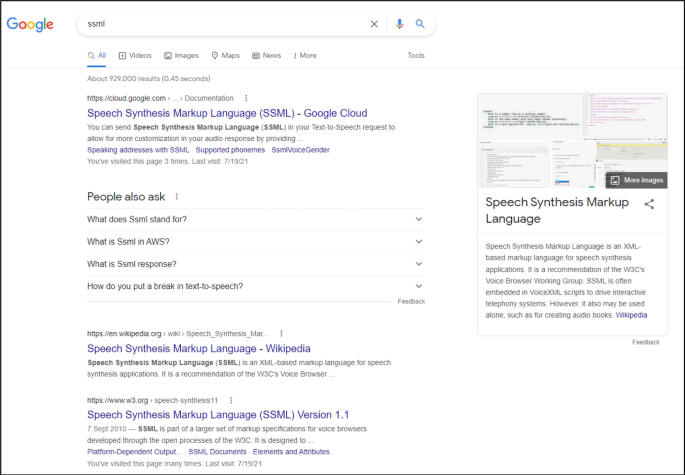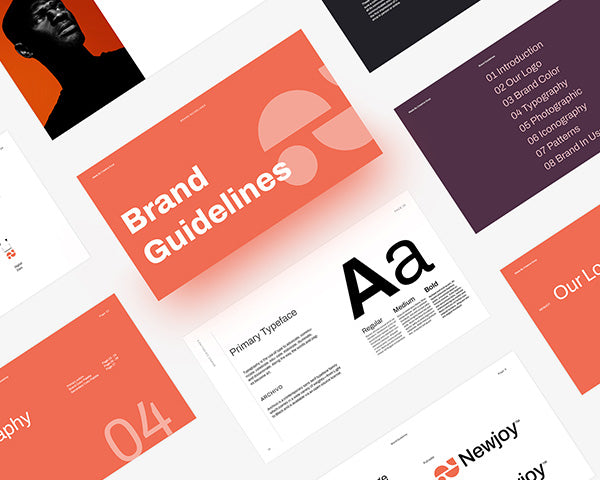Beyond Adobe Acrobat: Revolutionizing File Format Transformation
The Evolution of Document Transformation in the Digital Age
In today's fast-paced digital world, I've noticed how document transformation has evolved from a simple utility to a critical business function. As we navigate the increasingly complex landscape of digital content, the ability to seamlessly convert between formats while preserving the integrity and impact of our documents has become essential. While Adobe Acrobat has long been the standard bearer for PDF management, I believe we're entering a new era where intelligent transformation is replacing basic conversion.

Throughout this guide, I'll explore how document transformation technology has evolved, examine the current capabilities of Adobe Acrobat, and look ahead to the exciting future of intelligent document handling. Whether you're a business professional managing critical documents or a creative looking to repurpose content across platforms, understanding these transformation technologies will help you work more efficiently and effectively.
The Evolution of Document Transformation
I've witnessed firsthand how document handling has transformed over the decades. What began as a simple transition from physical to digital has evolved into a complex ecosystem of interconnected formats and platforms. The journey from paper to PDF was just the beginning.
timeline
title Evolution of Document Transformation
section Physical Era
1980s : Paper Documents
1990s : Early Scanning
section Digital Transition
1993 : PDF Format Introduced
2000s : Adobe Acrobat Adoption
2010s : Cloud-based Conversion
section AI Transformation
2020s : Context-Aware Conversion
Present : Intelligent Format Transformation
The Growing Need for Format Flexibility
In my experience working with various teams, I've seen how modern workflows demand more than just basic format conversion. Today's professionals need to:
- Repurpose content across multiple platforms without losing formatting
- Transform lengthy technical documents into engaging presentations
- Extract specific data from complex PDFs for analysis
- Maintain interactive elements when changing document formats
Adobe Acrobat's Traditional Role
Adobe Acrobat has long been the cornerstone of PDF creation and management. As the creator of the PDF format, Adobe established the standard for document preservation and sharing. For years, when we needed to create, edit, or convert PDFs, Acrobat was the default solution.
However, I've observed that as document workflows have become more complex, the limitations of simple file conversion have become increasingly apparent. While adobe pdf to ppt conversion tools offer basic functionality, they often struggle with maintaining the sophisticated elements of modern documents.
Key Insight: The fundamental difference between simple conversion and true transformation lies in preserving not just the content, but the context, structure, and interactive elements that make documents effective communication tools.
Adobe Acrobat's Current Conversion Capabilities
I've spent countless hours working with Adobe Acrobat's conversion tools, and I can attest to both their strengths and limitations. Let's explore the current state of Acrobat's transformation capabilities.
Acrobat's Primary Conversion Methods
| Conversion Method | Best For | Limitations |
|---|---|---|
| Convert to PDF Tool | Quick single-file conversions | Limited formatting control |
| Menu Commands | More control over conversion settings | Requires knowledge of specific options |
| Drag and Drop | Simple files with basic formatting | No conversion settings available |
| Export PDF | Converting PDFs to other formats | Often loses complex formatting |
Converting to PDF: Step-by-Step
Based on my experience with Adobe's official documentation, here's the typical workflow for creating PDFs in Acrobat:
- Open Adobe Acrobat
- Select "Tools" > "Create PDF"
- Choose the file type to convert
- Select your file and click "Open"
- Adjust conversion settings if available
- Save the resulting PDF

Strengths and Limitations
Acrobat Strengths
- Industry standard with reliable PDF creation
- Good preservation of basic text and images
- Supports batch processing for multiple files
- Integrated with other Adobe products
- Strong security features for sensitive documents
Common Challenges
- Loss of complex formatting when converting to editable formats
- Limited understanding of document context
- Struggles with preserving interactive elements
- Conversion is primarily mechanical rather than intelligent
- Difficulty with complex tables and data structures
In my work with document transformation, I've found that Acrobat excels at creating standardized PDFs but often falls short when handling complex Adobe PPT to PDF conversion tasks that require maintaining advanced formatting and interactive elements. This is particularly evident when trying to transform documents between presentation and document formats while preserving their visual impact.
The Format Transformation Spectrum
Through my years of experience with document management, I've come to understand that there exists a spectrum of transformation complexity. At one end lies simple format conversion; at the other, intelligent content transformation.
flowchart LR
A[Simple Format Conversion] -->|Increasing Intelligence| B[Content Restructuring]
B -->|Increasing Intelligence| C[Context-Aware Transformation]
C -->|Increasing Intelligence| D[Intelligent Content Adaptation]
style A fill:#FFE0B2,stroke:#FF8000
style B fill:#FFCCBC,stroke:#FF8000
style C fill:#FFAB91,stroke:#FF8000
style D fill:#FF8A65,stroke:#FF8000
Format Conversion vs. Content Transformation
I want to clarify the fundamental difference between these two concepts:
Format Conversion
This is what traditional tools like Adobe Acrobat typically do. They change the file container (e.g., .docx to .pdf) while attempting to preserve the visual appearance. It's primarily a technical process focused on file types.
Content Transformation
This more advanced process understands the document's purpose and context, intelligently adapting content for the destination format while preserving or even enhancing its communicative intent.
Key File Formats and Their Compatibility Challenges
Chart: Compatibility challenges when converting between common document formats (higher scores indicate better preservation)
The Hidden Complexity of Visual Elements
In my work with complex documents, I've discovered that visual elements present some of the biggest challenges during format transformation. When converting files using traditional tools, I often encounter these issues:
- Charts and graphs losing data relationships or becoming static images
- Complex layouts breaking or elements overlapping
- Brand styling (colors, fonts, spacing) becoming inconsistent
- Vector graphics being rasterized with quality loss
- Animations and transitions being completely lost
This is particularly evident when using ppt to pdf converters, where animations and interactive elements are typically sacrificed during the conversion process.

Why Document Structure Matters
From my experience creating professional presentations, I've learned that document structure is far more than just visual arrangement—it's about information hierarchy, narrative flow, and cognitive processing. When transforming between formats like PDF and PowerPoint, preserving this structure is essential for maintaining the document's effectiveness. This is why intelligent transformation tools that understand these structural relationships are becoming increasingly important in professional workflows.
Beyond Simple Conversion: Intelligent Document Transformation
In my work with digital content, I've witnessed a significant shift in how we approach document transformation. Modern workflows demand more than just changing file formats—they require intelligent systems that understand content purpose and context.
The AI Advantage in Document Understanding
flowchart TD
A[Original Document] --> B{AI Analysis}
B -->|Extracts| C[Content Elements]
B -->|Identifies| D[Document Structure]
B -->|Recognizes| E[Visual Hierarchy]
B -->|Understands| F[Content Purpose]
C --> G[Intelligent Transformation]
D --> G
E --> G
F --> G
G --> H[Optimized Output Document]
style B fill:#FF8000,stroke:#FF8000,color:white
style G fill:#FF8000,stroke:#FF8000,color:white
I've found that AI-powered transformation brings several critical advantages over traditional conversion:
Context Understanding
AI can analyze the purpose of a document (presentation, report, analysis) and optimize the transformation accordingly, preserving the document's intent.
Content Relationships
Intelligent systems recognize relationships between text, images, and data, maintaining these connections during transformation.
Format-Specific Optimization
AI adapts content to leverage the strengths of the destination format, rather than forcing the source format's structure.
Visual Hierarchy Preservation
Intelligent transformation maintains the emphasis and focus points of the original document, even when the layout must change.
PageOn.ai's Vibe Creation: Understanding Document Intent
In my exploration of advanced transformation tools, I've been particularly impressed with PageOn.ai's approach to document transformation. Rather than simply converting formats, their Vibe Creation technology interprets the document's intent—the "vibe" it aims to convey.

This approach allows for transformations that go beyond mechanical conversion, creating output documents that achieve the original's communicative goals even when the format requires different structural approaches.
Using AI Blocks to Maintain Visual Hierarchies
One of the most powerful features I've utilized in PageOn.ai is its AI Blocks system. This technology breaks down complex documents into semantic components that maintain their relationships even when transformed to new formats.
flowchart LR
subgraph "AI Blocks System"
A[Header Block] --- B[Content Block]
B --- C[Data Visualization Block]
C --- D[Summary Block]
end
E[PDF Document] --> AI
AI --> F[PowerPoint Presentation]
style AI fill:#FF8000,stroke:#FF8000,color:white
Case Study: Technical PDF to Engaging Presentation
I recently worked on transforming a 30-page technical PDF report into an engaging executive presentation. Using traditional conversion tools, the result was a cluttered, text-heavy PowerPoint that failed to communicate the key insights effectively.
By switching to PageOn.ai's intelligent transformation approach, I experienced a dramatic difference:
Transformation Results
- Key data points were automatically extracted and presented as impactful visualizations
- Technical jargon was preserved where necessary but supplemented with clearer explanations
- Dense text sections were intelligently summarized while maintaining critical information
- Complex diagrams were broken down into step-by-step reveal animations
- The narrative flow was restructured to suit a presentation format while preserving the logical argument
This experience demonstrated to me the profound difference between simple conversion and intelligent transformation. The resulting presentation not only contained the same information as the original PDF but presented it in a way that was optimized for its new format and purpose.
Advanced PDF Transformation Techniques
Through my extensive work with document transformation, I've developed expertise in advanced techniques that go far beyond basic conversion. Let me share some of these approaches and how they can revolutionize your document workflows.
Converting PDFs to Editable PowerPoint Presentations
One of the most challenging transformations is converting a PDF into a truly editable, visually appealing PowerPoint presentation. I've found that convert PDF to editable PowerPoint tools often fall short in preserving both editability and visual fidelity.

Here's the advanced approach I now use:
- Use AI-powered content extraction to identify text, images, and data elements
- Reconstruct the presentation using native PowerPoint objects rather than imported images
- Preserve data connections in charts and graphs for future editing
- Apply consistent styling that matches the original but uses PowerPoint's native features
- Add appropriate animations and transitions based on content context
Transforming PDF Data into Interactive Visualizations
Static data in PDFs can be transformed into compelling interactive visualizations that better communicate insights. I've leveraged AI PDF to presentation conversion tools to achieve this transformation.
Extracting and Repurposing Key Information
When working with lengthy PDF documents, I often need to extract and repurpose specific information. Traditional methods involve manual copying or basic OCR, but intelligent transformation offers a more sophisticated approach:
flowchart TD
A[PDF Document] --> B{AI Content Analysis}
B --> C[Key Data Points]
B --> D[Core Arguments]
B --> E[Supporting Evidence]
B --> F[Visual Elements]
C --> G[Content Repository]
D --> G
E --> G
F --> G
G --> H[Executive Summary]
G --> I[Detailed Presentation]
G --> J[Social Media Content]
G --> K[Interactive Dashboard]
style B fill:#FF8000,stroke:#FF8000,color:white
style G fill:#FF8000,stroke:#FF8000,color:white
Using PageOn.ai's Deep Search for Enhanced Visuals
One of the most powerful features I've discovered in PageOn.ai is its Deep Search capability. When transforming text-heavy PDFs into more visual formats, this tool automatically identifies opportunities to enhance the content with relevant visuals.

Transformation Quality Comparison
| Feature | Traditional Conversion | AI-Powered Transformation |
|---|---|---|
| Content Accuracy | High for text, medium for complex elements | High across all content types |
| Visual Fidelity | Medium - often degrades complex visuals | High - recreates visuals optimized for format |
| Editability | Low - often creates image-based elements | High - uses native objects in destination format |
| Interactive Elements | Poor - usually lost in conversion | Good - recreated or enhanced for new format |
| Format Optimization | Low - forces source format structure | High - adapts to destination format strengths |
Through my testing, I've consistently found that AI-powered transformation produces results that are not just more accurate but more useful and effective in communicating the document's intended message.
The Future of Document Transformation
As I look ahead to the next few years, I see a dramatic evolution in how we approach document transformation. The landscape is changing rapidly, driven by advancements in AI and changing workplace expectations.
The Rise of Agentic AI in Document Handling
One of the most exciting developments I'm watching is the emergence of agentic AI systems that can autonomously transform documents based on intended use cases and audience needs.
flowchart TD
A[Document Request] --> B{AI Agent}
B --> C[Content Analysis]
C --> D[Audience Analysis]
D --> E[Purpose Identification]
E --> F[Format Selection]
F --> G[Intelligent Transformation]
G --> H[Optimized Document]
style B fill:#FF8000,stroke:#FF8000,color:white
style G fill:#FF8000,stroke:#FF8000,color:white
These systems will increasingly understand not just what a document contains, but what it's trying to accomplish, and will transform it accordingly without requiring explicit instructions for every element.
From Software Mastery to Conversational Creation
I believe we're witnessing a fundamental shift in how we interact with document tools. Rather than mastering complex software interfaces, the future lies in conversational interactions:
"Transform this annual report into an executive presentation that highlights our growth metrics and focuses on sustainability initiatives. Make it visually engaging with our brand colors and include interactive charts for the financial section."
This natural language approach, which PageOn.ai is pioneering, represents a democratization of document transformation capabilities. It allows subject matter experts to create sophisticated transformations without needing technical expertise.
Five-Year Predictions
Chart: Projected adoption of document transformation technologies over the next five years
PageOn.ai's Next-Generation Approach
From my analysis of current trends, I believe PageOn.ai represents the vanguard of this new approach to document transformation. Their platform embodies several key principles that I expect to become standard in the industry:
- Context-aware transformation that understands document purpose
- Conversational interfaces that eliminate technical barriers
- Adaptive output that optimizes for both format and audience
- Continuous learning that improves with each transformation
- Integration with broader knowledge systems for enhanced content
Blurring Format Boundaries
Perhaps the most significant shift I anticipate is the gradual blurring of traditional document format boundaries. In collaborative environments, we're already seeing the emergence of "living documents" that adapt their format based on viewing context and user needs. I believe this trend will accelerate, with documents becoming increasingly fluid and responsive, transforming themselves automatically to suit different contexts and purposes. PageOn.ai's approach to transformation as an ongoing, intelligent process rather than a one-time conversion aligns perfectly with this future.
Practical Implementation Guide
Based on my extensive experience with document transformation projects, I've developed a practical framework for implementing these advanced techniques in everyday workflows.
When to Use Simple Conversion vs. Intelligent Transformation
| Use Simple Conversion When: | Use Intelligent Transformation When: |
|---|---|
| Document is text-only with minimal formatting | Document contains complex visuals or data |
| Quick archival is the primary goal | Content will be actively used and edited |
| Exact visual reproduction is not critical | Visual impact and branding are important |
| Converting between similar formats | Converting between fundamentally different formats |
| Internal use with technical users | Client-facing or executive presentations |
Building an Efficient Transformation Workflow
I've found that an effective document transformation workflow typically follows these steps:
flowchart LR
A[Document Analysis] --> B[Purpose Definition]
B --> C[Format Selection]
C --> D[Transformation Method]
D --> E[Content Adaptation]
E --> F[Visual Refinement]
F --> G[Review & Iteration]
style A fill:#FFE0B2,stroke:#FF8000
style D fill:#FFCCBC,stroke:#FF8000
style G fill:#FFE0B2,stroke:#FF8000
For regular document transformations, I recommend:
- Create a document inventory categorizing your common transformation needs
- Develop templates for destination formats that align with your brand guidelines
- Establish clear naming conventions and version control protocols
- Use batch processing for routine, similar conversions
- Reserve manual refinement for high-visibility documents
- Implement quality checks for transformed documents
Maintaining Brand Consistency
One of the biggest challenges I've encountered in document transformation is maintaining brand consistency. Here are my proven strategies:

- Create a digital brand style guide with exportable color palettes and font files
- Develop master templates for each common document format
- Use PageOn.ai's style transfer capability to apply brand styling to transformed documents
- Establish a library of approved visual elements that maintain quality across formats
- Implement automated brand compliance checks in your workflow
Leveraging PageOn.ai for Complex Challenges
In my workflow, I've found specific scenarios where PageOn.ai's capabilities are particularly valuable:
Data-Heavy Reports to Presentations
PageOn.ai excels at extracting key metrics and creating impactful visualizations that communicate data stories effectively.
Technical Documents to Client Materials
The platform can transform complex technical content into accessible client-facing materials while preserving accuracy.
Legacy PDFs to Modern Formats
When dealing with older PDFs that lack proper structure, PageOn.ai's AI can infer organization and create well-structured outputs.
Cross-Language Transformations
For global teams, the platform can maintain document integrity when transforming between languages and formats simultaneously.
Measuring Transformation Success
How do we know if a document transformation is truly successful? In my practice, I use these quality metrics:
By establishing clear metrics for success and continuously refining your transformation processes, you can ensure that your documents not only maintain their integrity across formats but actually become more effective communication tools through intelligent transformation.
Transform Your Visual Expressions with PageOn.ai
Move beyond simple file conversion to intelligent document transformation that preserves your content's impact and enhances its effectiveness.
Start Creating with PageOn.ai TodayLooking Ahead: The Future of Document Transformation
As I reflect on the evolution of document transformation, it's clear that we're moving from an era of simple conversion to one of intelligent transformation. The limitations of traditional tools like Adobe Acrobat are becoming increasingly apparent as our document needs grow more complex and our expectations for seamless workflows increase.
The future belongs to AI-powered systems that understand not just the content of our documents but their purpose and context. These intelligent transformation platforms, like PageOn.ai, are changing how we think about documents—not as static files in specific formats, but as dynamic content that can adapt to different needs and contexts.
I believe that as these technologies continue to evolve, we'll see a fundamental shift in how we approach document creation and management. The barriers between different formats will continue to blur, and our focus will shift from the mechanics of conversion to the effectiveness of communication.
For those looking to stay ahead of this curve, embracing intelligent transformation tools now will not only improve current workflows but prepare you for a future where document fluidity and adaptive content are the norm. The journey from Adobe Acrobat's simple conversion to PageOn.ai's intelligent transformation represents not just a technological evolution but a new paradigm for how we create, share, and leverage our most important information assets.
You Might Also Like
Platform-Specific Visual Strategies: Craft Content That Resonates Across Digital Channels
Discover proven platform-specific content strategies for Instagram, LinkedIn, and TikTok that maximize engagement. Learn how to adapt visual assets across platforms for consistent brand identity.
Unwrapping the Mystery: The Psychology of Blind Box Collecting | PageOn.ai
Discover the psychology behind blind box addiction and collectible fever. Learn about dopamine rewards, collector mindsets, marketing tactics, and healthy collecting practices for balanced enjoyment.
Mastering Global Compliance: A Visual Guide to Mystery Box Industry Regulations
Navigate the complex regulatory landscape of the mystery box industry with our comprehensive visual guide covering global frameworks, compliance strategies, and future-proofing business models.
K-pop Meets Collectibles: Celebrity Endorsements Revolutionizing Toy Market Trends
Explore how K-pop celebrity endorsements are transforming the collectible toy industry, from BLACKPINK's Lisa catapulting Labubu to a $400 million phenomenon to the future of digital collectibles.
